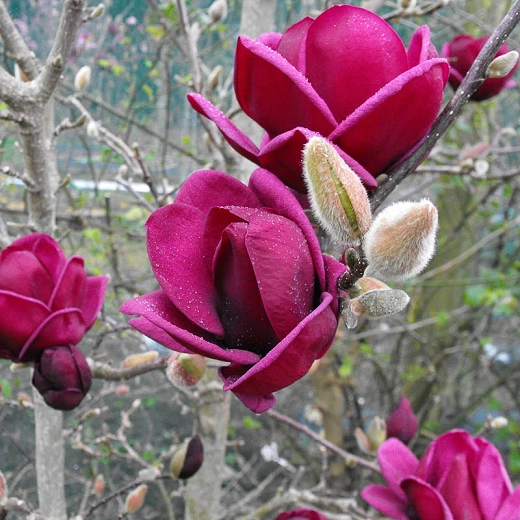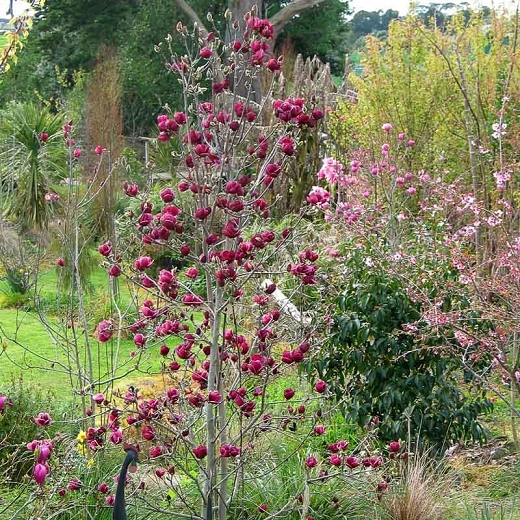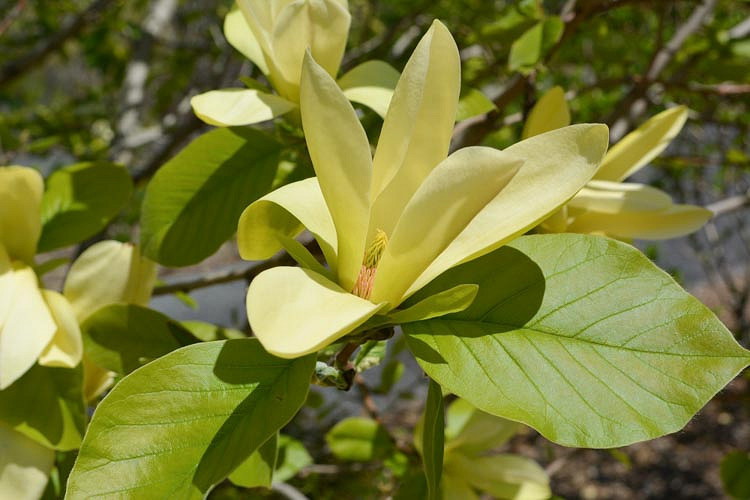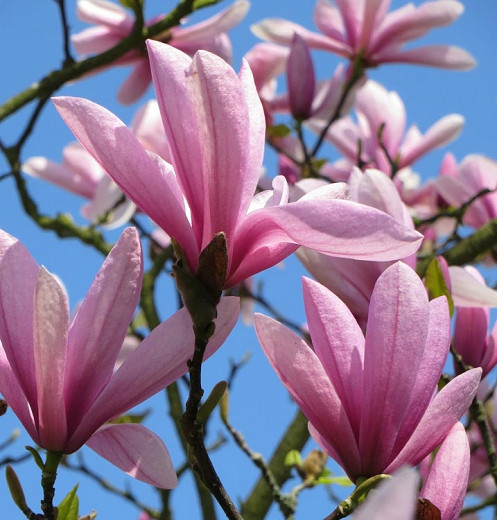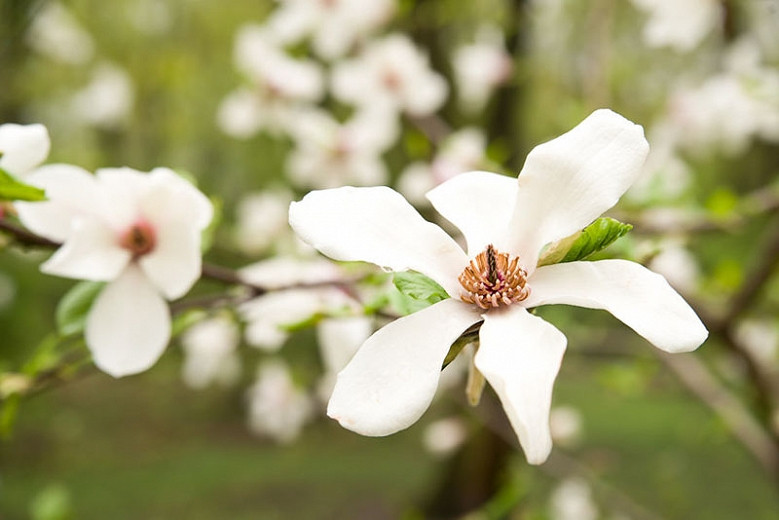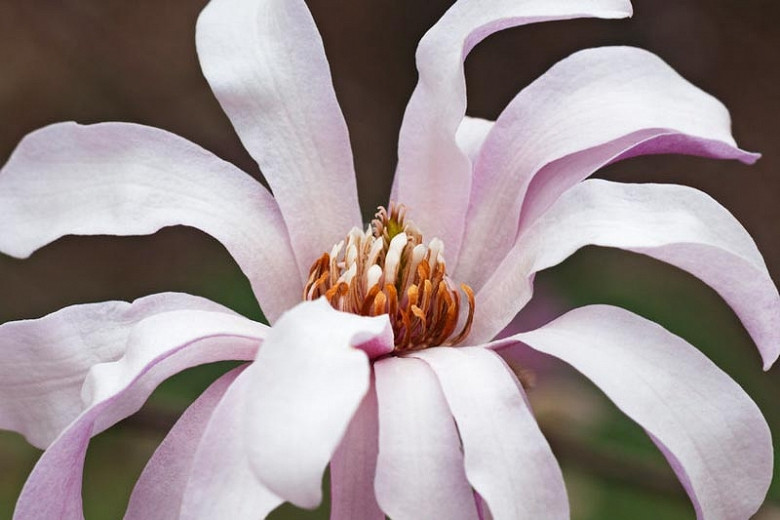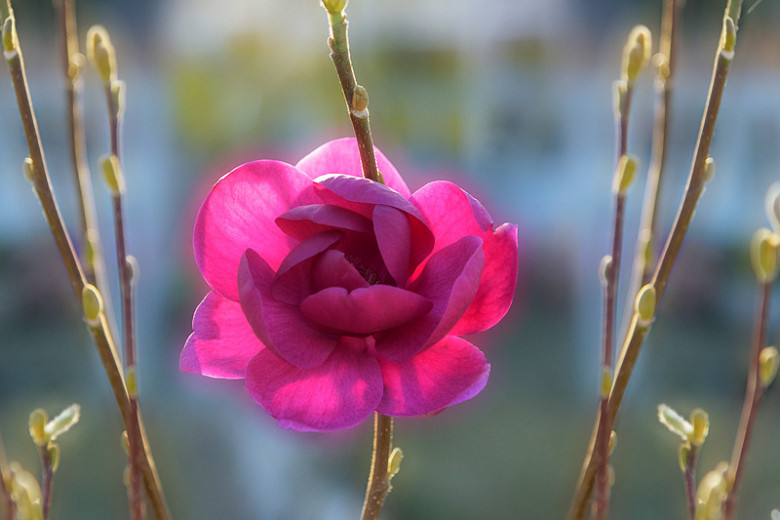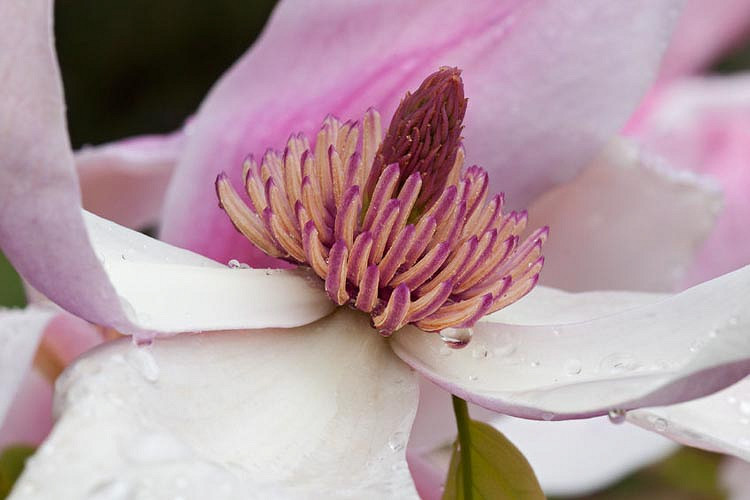Magnolia Genie
Perfect for small gardens, Magnolia ‘Genie’ is a compact, small, deciduous tree with incredibly eye-catching scented blossoms in mid-spring. Opening from black-red buds, the rich maroon-purple, tulip-shaped flowers are opulent, large, 6 in. across (15 cm), and count up to 6-12 tepals with nicely reflexed tips paling to light magenta rose.
Perfect for small gardens, Magnolia 'Genie' is a compact, small, deciduous tree with incredibly eye-catching scented blossoms in mid-spring. Opening from black-red buds, the rich maroon-purple, tulip-shaped flowers are opulent, large, 6 in. across (15 cm), and count up to 6-12 tepals with nicely reflexed tips paling to light magenta rose. While this Magnolia flowers primarily in spring, it may continue to bloom sporadically thereafter for months when moisture is adequate. This hybrid Magnolia blooms at an early age and makes an elegant, small specimen tree.
- Grows with an upright, pyramidal habit up to 10-13 ft. tall (3-4 m) and 5-6 ft. wide (2 m)
- A full sun to part shade lover, this plant is best grown in consistently moist, slightly acidic, organically rich, well-drained soils. Neutral to slightly alkaline soils are also suitable for growth if the soil is moisture retentive. Magnolias are adaptable to clay, loam or sandy soils, but most grow poorly in wet or poorly drained soils. Provide a site sheltered from cold, dry winds as buds and flowers may be damaged by cold winds. Late frosts may damage flower buds too.
- May be attacked by scale insects, coral spots, honey fungus, and phytophthora root rot.
- Spectacular as a specimen plant for dramatic spring blooms. Great flowering tree for city gardens or cottage gardens.
- Magnolia pruning should be carried out in midsummer when in full leaf
- Deciduous Magnolias are best planted when dormant, in late fall or winter in warmer climates and early spring in cold climates. Evergreen magnolias are best planted in early spring. For the first 6 to 12 months after planting, both types will benefit from mulch and regular irrigation during warm or dry weather.
- Propagate by softwood cuttings in spring or early summer, or semi-ripe cuttings in late summer and fall
Requirements
| Hardiness | 5 – 9 |
|---|---|
| Heat Zones | 5 – 9 |
| Climate Zones | 2B, 3, 3A, 3B, 4, 5, 6, 7, 8, 9, 14, 15, 16, 17, 18, 19, 20, 21, 22, 23, 24 |
| Plant Type | Trees |
| Plant Family | Magnolia |
| Exposure | Full Sun, Partial Sun |
| Season of Interest | Spring (Mid) |
| Height | 10' – 13' (3m – 3.9m) |
| Spread | 5' – 6' (150cm – 180cm) |
| Water Needs | Average |
| Maintenance | Low |
| Soil Type | Clay, Loam, Sand |
| Soil pH | Acid, Alkaline, Neutral |
| Soil Drainage | Moist but Well-Drained |
| Characteristics | Cut Flowers, Fragrant, Showy |
| Tolerance | Clay Soil |
| Attracts | Birds, Butterflies |
| Garden Uses | Beds and Borders, Small Gardens |
| Garden Styles | City and Courtyard, Informal and Cottage, Traditional Garden |
